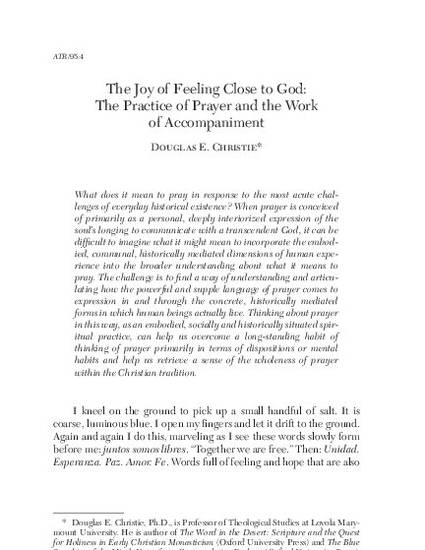
What does it mean to pray in response to the most acute challenges of everyday historical existence? When prayer is conceived of primarily as a personal, deeply interiorized expression of the soul’s longing to communicate with a transcendent God, it can be difficult to imagine what it might mean to incorporate the embodied, communal, historically mediated dimensions of human experience into the broader understanding about what it means to pray. The challenge is to find a way of understanding and articulating how the powerful and supple language of prayer comes to expression in and through the concrete, historically mediated forms in which human beings actually live. Thinking about prayer in this way, as an embodied, socially and historically situated spiritual practice, can help us overcome a long-standing habit of thinking of prayer primarily in terms of dispositions or mental habits and help us retrieve a sense of the wholeness of prayer within the Christian tradition.
Christie, Douglas E. “‘The Joy of Feeling Close to God’: The Practice of Prayer and the Work of Accompaniment.” Anglican Theological Review 95.4 (Fall, 2013): 585-606. Print.
Available at: http://works.bepress.com/douglas_burton-christie/30/
